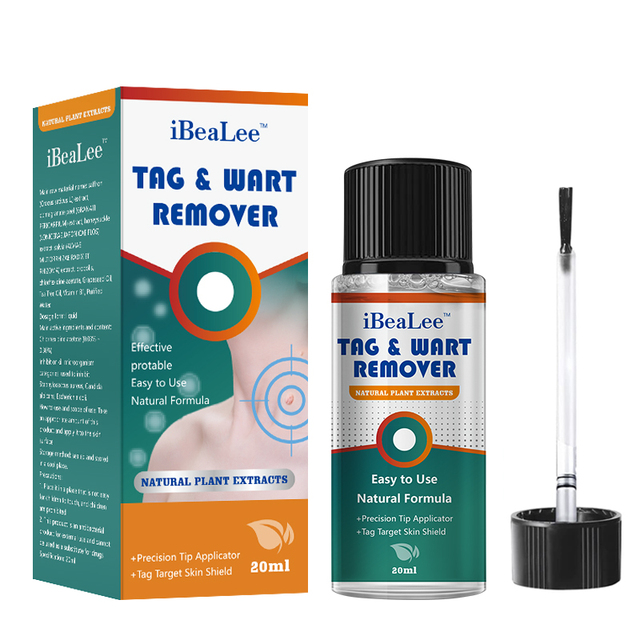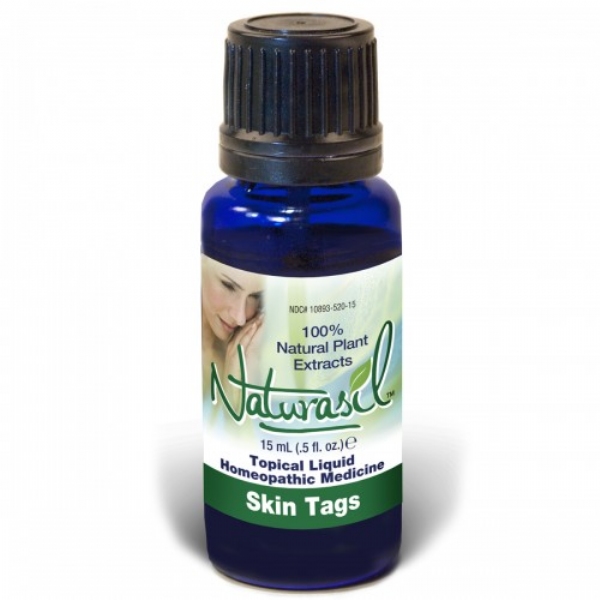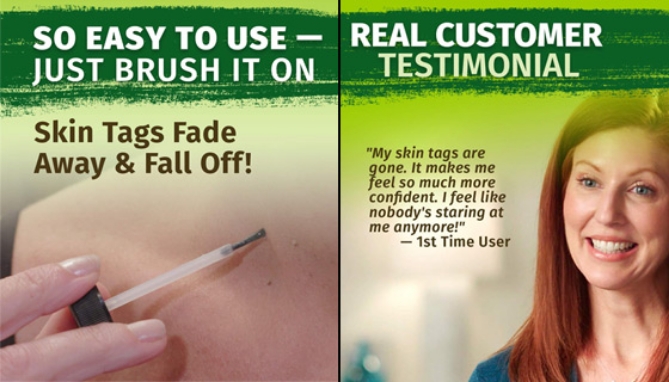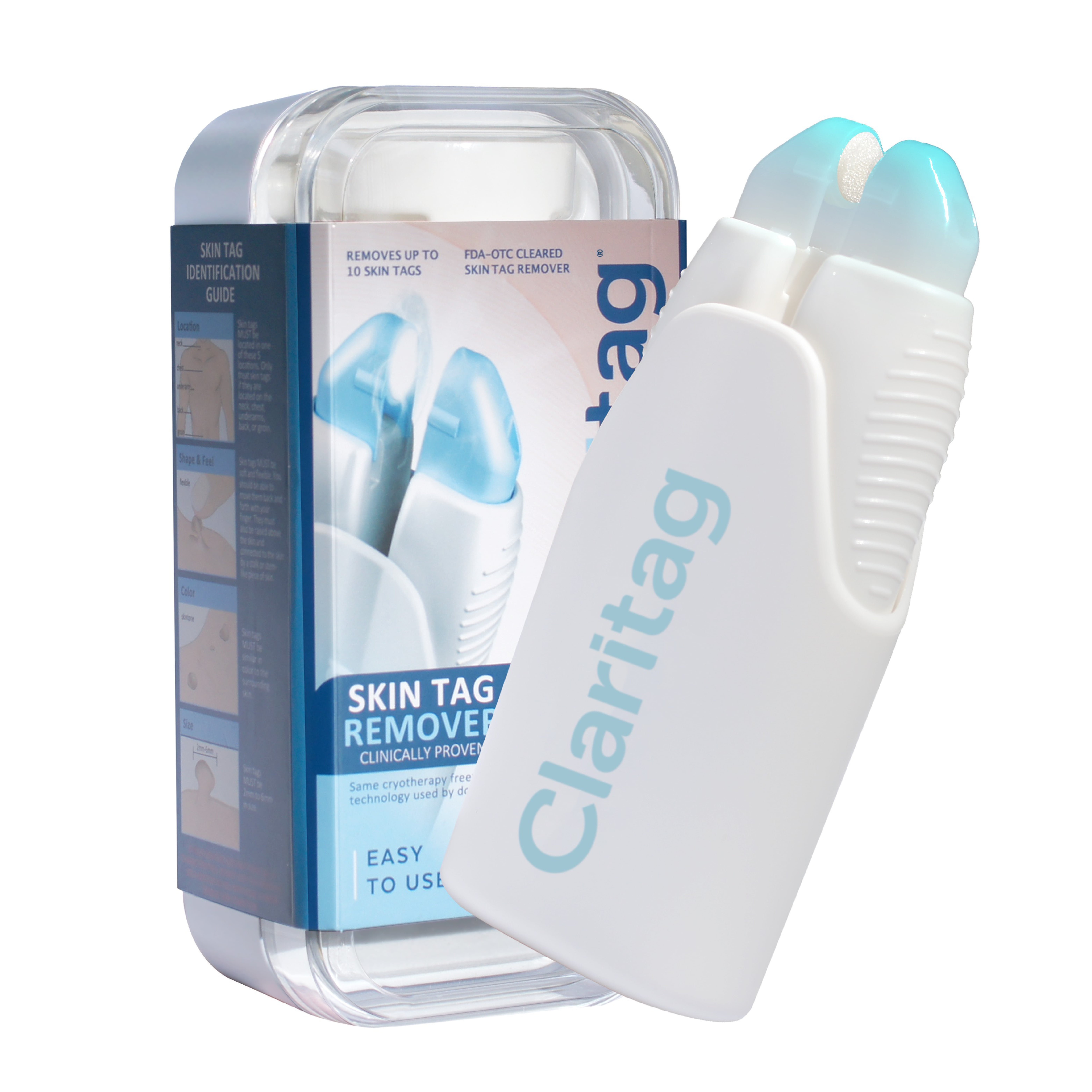Skin Tag Remover As Seen On Tv
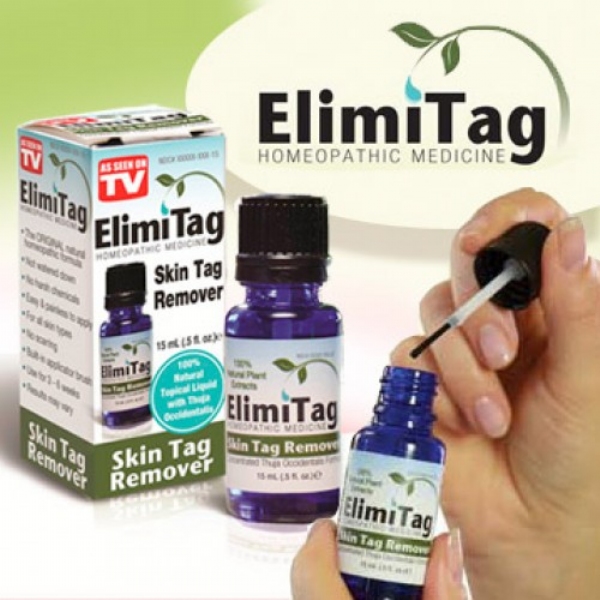
Imagine a world where minor skin imperfections no longer hold you back from feeling confident in your own skin. A world where a quick, at-home solution can address those pesky skin tags that sometimes seem to appear out of nowhere. Well, that world might be closer than you think, thanks to the emergence of innovative skin tag removal products now gaining popularity, particularly those advertised through television.
This article explores the rising trend of at-home skin tag removers, especially those marketed through "As Seen On TV" channels. We'll delve into the science behind these products, their efficacy, potential benefits, and crucial considerations for consumers looking to achieve smoother, clearer skin without a trip to the dermatologist.
Skin tags, also known as acrochordons, are small, benign growths that typically appear on the neck, armpits, eyelids, and groin. They're often flesh-colored and can vary in size from a tiny speck to a few millimeters. While harmless, their presence can be a cosmetic concern for many individuals.
Traditional methods for removing skin tags include surgical excision, cryotherapy (freezing), and electrocautery (burning). These procedures are typically performed by dermatologists and can be effective, but they require an appointment and may involve some discomfort and cost.
The demand for accessible and affordable cosmetic solutions has fueled the popularity of at-home skin tag removers. "As Seen On TV" products, in particular, have tapped into this market by offering convenient, over-the-counter alternatives.
The Appeal of "As Seen On TV" Solutions
"As Seen On TV" products often promise simplicity and ease of use, attracting consumers seeking a quick fix. These products are usually accompanied by compelling testimonials and before-and-after photos, further enhancing their appeal.
Marketing strategies often emphasize the time and cost savings associated with at-home treatment compared to professional procedures. This resonates with individuals who are busy or concerned about the expense of visiting a dermatologist.
Furthermore, the accessibility of these products, often available online or at local drugstores, makes them a convenient option for those who prefer to avoid medical appointments.
Understanding the Science Behind At-Home Skin Tag Removal
Many at-home skin tag removers utilize various mechanisms to achieve their intended results. Some products contain ingredients that aim to dry out the skin tag, causing it to eventually fall off.
Others may use a band or patch to constrict the base of the skin tag, cutting off its blood supply and leading to its eventual demise. These methods are typically based on the principle of ligation, a technique commonly used in medical settings.
It's crucial to understand the ingredients and mechanisms involved in each product to ensure its suitability for your skin and to minimize the risk of adverse reactions.
Common Ingredients and Their Potential Effects
Some common ingredients found in at-home skin tag removers include salicylic acid, tea tree oil, and various plant extracts. Salicylic acid is a well-known exfoliant that can help to gradually break down the skin tissue.
Tea tree oil is believed to possess antiseptic and anti-inflammatory properties, potentially aiding in the healing process. Plant extracts, such as those from aloe vera or chamomile, are often added to soothe the skin and minimize irritation.
However, it's important to note that the effectiveness and safety of these ingredients can vary depending on the concentration, formulation, and individual skin sensitivity.
Efficacy and Potential Risks: A Balanced Perspective
While many users report positive experiences with at-home skin tag removers, it's essential to approach these products with realistic expectations. The efficacy of these treatments can vary depending on the size, location, and type of skin tag.
Some potential risks associated with at-home removal include skin irritation, redness, swelling, infection, and scarring. It's crucial to follow the product instructions carefully and to perform a patch test before applying the treatment to a larger area.
Individuals with sensitive skin, allergies, or underlying medical conditions should consult with a dermatologist before using any at-home skin tag removal product.
When to Consult a Dermatologist
It's crucial to seek professional medical advice in certain situations. If a skin tag is large, bleeding, painful, or changing in appearance, it's essential to consult with a dermatologist to rule out any underlying medical conditions.
Dermatologists can accurately diagnose skin growths and recommend the most appropriate treatment options. They can also address any potential complications or concerns that may arise during the removal process.
Furthermore, if you're unsure whether a growth is a skin tag or something else, a dermatologist can provide a definitive diagnosis.
Navigating the "As Seen On TV" Landscape: Tips for Smart Consumers
When considering an "As Seen On TV" skin tag remover, it's important to conduct thorough research. Read product reviews from multiple sources to get a balanced perspective on its effectiveness and potential side effects.
Pay close attention to the ingredients list and research any unfamiliar components. Look for products that have been tested and approved by reputable organizations.
Be wary of products that make exaggerated claims or promise unrealistic results. Remember that not all products are created equal, and what works for one person may not work for another.
The Importance of Realistic Expectations and Patience
Even with the most effective at-home skin tag remover, it's important to have realistic expectations. The removal process may take time, and multiple applications may be necessary to achieve the desired results.
Patience is key, and it's crucial to avoid picking or scratching at the skin tag, as this can increase the risk of infection and scarring.
Remember that the goal is to safely and effectively remove the skin tag, so it's best to err on the side of caution.
A Future of Accessible Skincare?
The rise of at-home skin tag removers reflects a growing desire for accessible and convenient skincare solutions. As technology advances and more research is conducted, we may see even more innovative and effective products emerge.
However, it's crucial to remember that these products are not a substitute for professional medical care. Consulting with a dermatologist is always the best course of action when dealing with any skin concerns.
By combining the convenience of at-home treatments with the expertise of medical professionals, we can work towards a future where everyone has access to the skincare they need to feel confident and healthy.
Conclusion: Empowering Informed Choices
The allure of "As Seen On TV" skin tag removers lies in their promise of a quick, affordable, and convenient solution to a common cosmetic concern. While these products can offer a viable option for some, it's paramount to approach them with informed caution.
Understanding the ingredients, mechanisms of action, and potential risks is crucial for making safe and effective choices. Consulting with a dermatologist remains the gold standard for accurate diagnosis and personalized treatment plans.
Ultimately, the power lies in the consumer's ability to make educated decisions, balancing the desire for convenience with the importance of prioritizing skin health and safety. By doing so, individuals can confidently navigate the world of at-home skincare and achieve their desired results.
